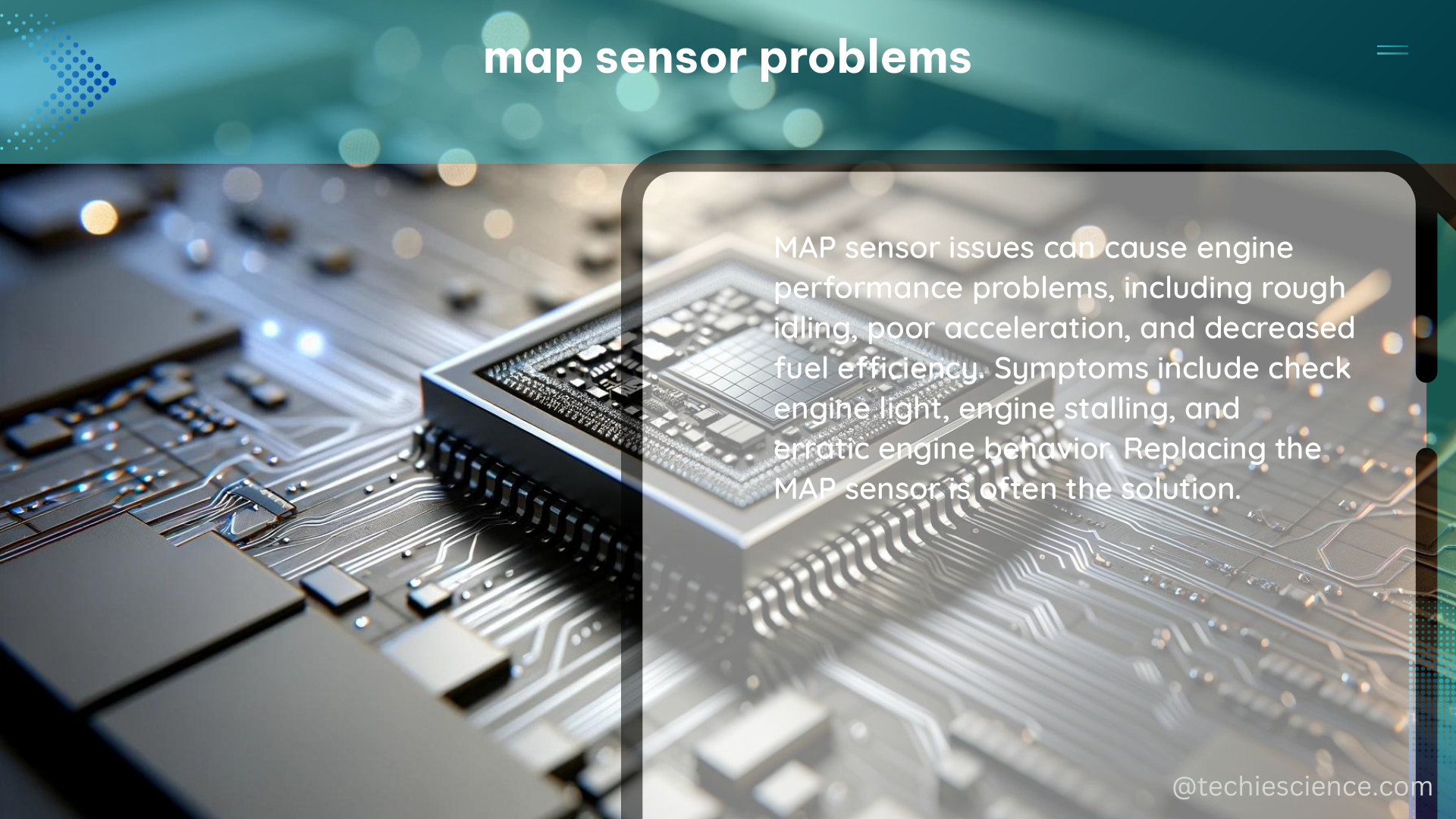Summary
MAP (Manifold Absolute Pressure) sensors are critical components in modern vehicles, providing essential data to the engine control unit (ECU) for proper fuel metering, ignition timing, and overall engine management. However, MAP sensors can sometimes encounter problems, leading to incorrect readings and potential drivability issues. This comprehensive guide will delve into the various types of MAP sensor problems, their causes, and the techniques used to diagnose and resolve them effectively.
Understanding MAP Sensor Operation

The MAP sensor measures the absolute pressure within the engine’s intake manifold, which varies based on engine load and throttle position. This information is then relayed to the ECU, which uses it to calculate the appropriate fuel delivery and ignition timing for optimal engine performance and efficiency.
The MAP sensor typically operates within a specific pressure range, such as 1 Bar, 2 Bar, or 3 Bar, depending on the vehicle and application. The sensor’s output voltage is directly proportional to the manifold pressure, with higher pressures corresponding to higher voltages.
Common MAP Sensor Problems
- Low MAP Sensor Readings: A MAP sensor reading low and not matching the barometric (BARO) sensor can trigger a diagnostic trouble code (DTC). This discrepancy can be caused by several factors, including:
- Vacuum leaks in the intake system
- Faulty wiring or electrical connections
-
Malfunctioning MAP sensor
-
Inconsistent MAP Sensor Readings: Fluctuating or erratic MAP sensor readings can be caused by:
- Intermittent electrical issues, such as loose connections or faulty wiring
-
Mechanical problems, such as a partially obstructed intake or a failing throttle body
-
Mismatch Between MAP and BARO Sensor Readings: A significant difference between the MAP and BARO sensor readings can indicate a problem with one or both sensors. This can be caused by:
- Faulty MAP sensor
- Incorrect MAP sensor calibration or replacement
-
Issues with the BARO sensor, such as a malfunctioning barometric pressure sensor
-
MAP Sensor Failure: In some cases, the MAP sensor itself may fail, leading to a complete loss of signal or erratic readings. This can be due to:
- Physical damage to the sensor
- Exposure to extreme temperatures or environmental conditions
- Wear and tear over time
Diagnosing MAP Sensor Problems
Diagnosing MAP sensor problems typically involves a combination of visual inspections, voltage checks, and comparisons with known good values. Here are the steps to diagnose MAP sensor issues:
-
Visual Inspection: Check for any signs of physical damage to the MAP sensor, such as cracks, leaks, or loose connections. Inspect the wiring harness and connectors for any signs of wear or damage.
-
Voltage Checks: Use a multimeter to measure the MAP sensor’s output voltage and compare it to the expected voltage range. The voltage should be relatively stable at a steady engine RPM, with minor fluctuations due to changes in manifold pressure.
-
Comparison with Known Good Values: Compare the MAP sensor readings with the BARO sensor readings and known good values for the specific vehicle and application. This can help identify any discrepancies or inconsistencies.
-
Vacuum Leak Test: Perform a vacuum leak test to check for any leaks in the intake system that could affect the MAP sensor readings.
-
Sensor Replacement and Calibration: If the MAP sensor is found to be faulty, replace it with the correct sensor type and ensure proper calibration to the specific vehicle and engine configuration.
Specific MAP Sensor Troubleshooting Examples
-
Custom-Built LS3 Engine with MAP Sensor #55573248: This engine may require specific calibration data to ensure accurate MAP sensor readings and proper engine performance. Consult the manufacturer’s recommendations or seek guidance from experienced tuners to ensure the correct sensor is used and properly calibrated.
-
1996 5.7L Vortec Chevy Tahoe: This vehicle may use a specific MAP sensor type, and the use of an incorrect sensor can lead to issues with sensor readings and overall engine performance. Refer to the vehicle’s service manual or consult a professional to determine the correct MAP sensor for this application.
Conclusion
Diagnosing and resolving MAP sensor problems requires a thorough understanding of sensor operation, ideal behavior, and specifications, as well as hands-on testing and comparison with known good values. By following the steps outlined in this comprehensive guide, you can effectively troubleshoot and address MAP sensor issues, ensuring optimal engine performance and drivability.
References
- MAP Sensor Troubleshooting Video
- MAP Sensor #55573248 Forum Discussion
- MAP Sensor Reading Low and Not Matching BARO
- MAP Sensor Calibration Video
- MAP Sensor Weird Readings Discussion

The lambdageeks.com Core SME Team is a group of experienced subject matter experts from diverse scientific and technical fields including Physics, Chemistry, Technology,Electronics & Electrical Engineering, Automotive, Mechanical Engineering. Our team collaborates to create high-quality, well-researched articles on a wide range of science and technology topics for the lambdageeks.com website.
All Our Senior SME are having more than 7 Years of experience in the respective fields . They are either Working Industry Professionals or assocaited With different Universities. Refer Our Authors Page to get to know About our Core SMEs.